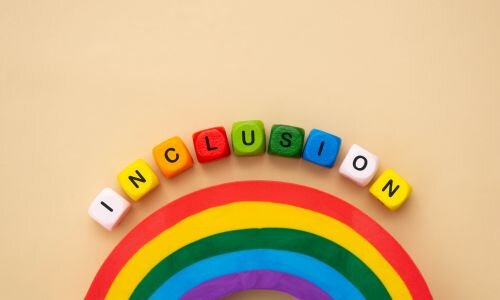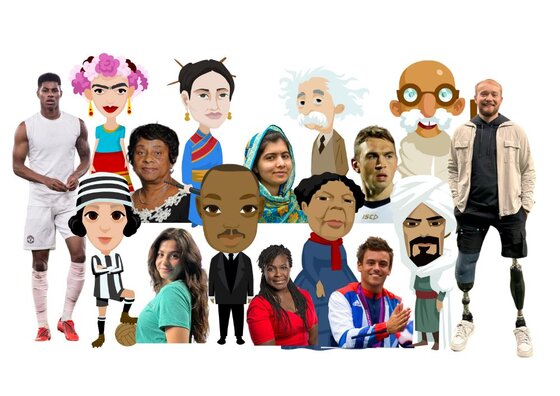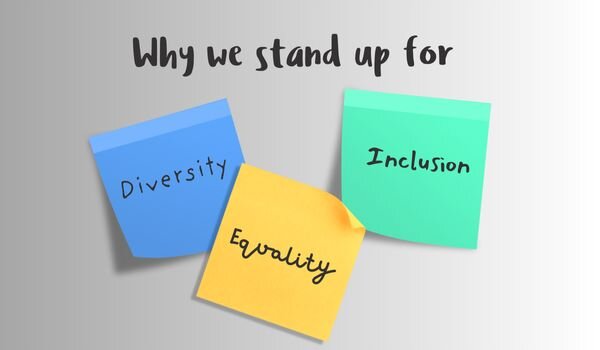by Selena Whitehead, Head of Education, Sept 2024
We are living in a moment where communities feel divided and unheard. One where the relative value of people and communities is questioned, and where words and even ‘names’ and their meanings are important. For Amazing People Schools, promoting our ‘EDI’ capabilities during this challenging current context is crucial. Some of the more ‘coherent’ pushback the topic receives is around whether ‘diversity and inclusion’ is in fact, a contradiction in terms and, indeed, whether EDI needs to be taught at all. It highlights why we need to bring EDI to life in our schools and provides an opportunity to explain what we actually mean by the term ‘Equality, Diversity and Inclusion‘, and elaborate on our Amazing People Schools approach. As an education provider, we are frequently asked by schools, “How do I open up the world to my school, which is a largely monocultural community?” or “How do I inspire and motivate my pupils who come from diverse backgrounds and cultures?” or even “How do I tackle racist bullying in my hyper-diverse school?” All of these questions spur us on to do what we can to support this vital area.
What do we mean by ‘diversity and inclusion’?
Everyone should be able to make the most of their lives and the talents afforded to them. ‘Equality’ provides the same rights and resources to every individual, enabling exposure to opportunities for all. It denotes the ability of everyone to access help or support, should they need it, creating a foundation on which dignity and respect towards others can be built.
In society, ‘diversity’ refers to the presence of differences within a given setting, such as race, gender, age, sexual orientation, socio-economic background, religion, neurodiversity, and physical abilities.
In biology, nature, the business world or in cultural contexts, ‘diversity’ is a positive concept, delivering resilience, innovation, and cultural inspiration. And we would argue that the benefits of diversity only come with inclusion.
Creating inclusive environments
‘Inclusion‘ is the practice of creating environments where everyone feels valued, respected, and empowered to fully participate, regardless of their differences. Inclusion goes beyond simply having diverse people in a space; it is about ensuring that those people feel like they belong.

Together, equality, diversity and inclusion aim to create a culture where differences are celebrated, and everyone has a voice and a sense of belonging. In schools, it means ensuring that all pupils with different characteristics and backgrounds are enabled and empowered to reach their full potential and to flourish.
Well firstly, the law requires it. The UK Equality Act 2010 gives protection from being discriminated against because of certain protected characteristics. This puts a legal obligation on schools to be aware of these characteristics and take steps to ensure that discrimination does not occur. The UN Convention on the Rights of the Child requires that schools seek to make an inclusive environment where students can see themselves represented, supporting them to flourish and thrive. This often goes beyond protected characteristics to recognising the widest range of voices and backgrounds. One such example of a collaborative public statement of intent is the Statement of Action and Commitments on Equality, Diversity, and Inclusion in Education. This statement demonstrates the acknowledgement and commitment of many educational organisations who seek to take action to embed equality, diversity, and inclusion in schools and trusts. Beyond the legalities, EDI helps foster an understanding of fairness and respect and underlines the importance of recognising diverse communities and difference (including protected characteristics). It contributes to removing barriers to opportunities and resources, and it challenges bias and stereotypes. EDI education highlights the value that everyone brings to society, with the goal of creating a more equitable environment in school communities.
You can’t be it if you can’t see it
Amazing People Schools celebrates the achievements and character strengths of all people. We recognise that everybody has a unique life experience, making them amazing in their own way. We believe that our differences—whether visible or invisible—are also our strengths.
All of our inspiring stories of role models, both historical and contemporary, have been deliberately chosen to represent people, groups, countries, and walks of life that may often be underrepresented in our schools.
The experience of the individual can contrast sharply with the experiences of those around them. For inclusion to be effective, it has to be active and continuous – with diverse experiences embedded across the curriculum and within the school culture through ongoing conversations and using a shared language to explore diversity.
When young people can see themselves in the curriculum, they’re often more inspired to take up the educational opportunities offered to them.
Inspiring young minds through inclusive role models
Focusing on the strengths that our amazing people have shown, we encourage young people to recognise that they too have these strengths and can build on them, unlocking their immense potential.

Finding out that Einstein was slow to speak helps children with language delays, as does the story of Helen Keller – disability rights advocate, political activist, and lecturer who lost her sight and hearing at 19 months old. Learning about Louis Armstrong – a cared-for child who went on to achieve his goals and leave a huge musical legacy – can help those feeling underrepresented or excluded to understand how he learned and was supported.
Importantly, all pupils begin to recognise that challenges, difficulties, and setbacks don’t have to stop them from achieving their goals and making a positive difference to others.
Taking time to discover the story of Gulwali Passarlay or Emi Mahmoud can bring awareness of the trials and tribulations of those forced to flee their homes. Crucially, we can learn from the strength of character that they demonstrated when faced with adversity. Using Science Week to actively learn about historical and contemporary inspirational women of science can inspire the next generation of female scientists.
EDI isn’t about denying the contributions of historical achievers to our national consciousness; it seeks to recognise all contributions to the sum of human experience, from both past and present.
Evolving and Inspiring
Evolving and Inspiring
At Amazing People Schools, we are always searching for new stories that enliven, inform, and educate. We seek to include examples of people from a range of backgrounds, in the hope that pupils in every classroom will find someone they identify with.
“It’s so important our pupils see themselves in our curriculum.” Emily Garratt, Brooklands Farm Primary
Like many amazing people, we’re always learning and seeking to improve. At our heart, we seek to inspire young people to understand and use their strengths to be the best that they can be, so that they can build the confidence to inform their own decisions and tread a positive path in life.
If you’d like to find out more about our diverse role models and stories at Amazing People Schools, visit our Resources page.



